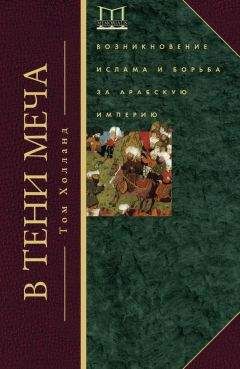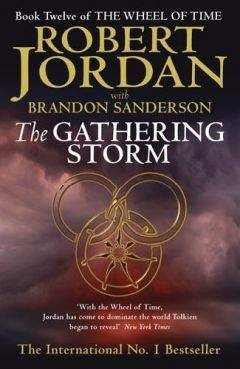Том Холланд - В тени меча. Возникновение ислама и борьба за Арабскую империю

Помощь проекту
В тени меча. Возникновение ислама и борьба за Арабскую империю читать книгу онлайн
Duffy, John: ’Byzantine Medicine in the Sixth and Seventh Centuries: Aspects of Teaching and Practice’ (Dumberton Oaks Papers 38, 1984).
Duri, A.A.: The Rise of Historical Writing Among the Arabs,trans. Lawrence I. Conrad (Princeton, 1983).
Durliat, Jean: ‘La Peste du Vie siecle: Pour un nouvel examen des sources byzantines’, in Hommes et richesses dans l’empire Byzantin, ed. V. Kravari, C. Morrison and J. Lefort (2 vols) (Paris, 1989–1991).
Ehrman, Bart: The Orthodox Corruption of Scripture; The Effect of Early Christological Controversies on the Text of the New Testament (Oxford, 1993).
Ibid. Lost Christianities: The Battles for Scripture and the Faiths We Never Knew (Oxford, 2003).
Elad, Amikam: ’Why Did ’Abd al-Malik Build the Dome of the Rock? A Re examination of the Muslim Sources’, in Raby and Johns.
Ibid. The Southern Golan in the Early Muslim Period: The Significance of Two Newly Discovered Milestones of’Abd al-Malik’ (Der Islam 76, 1999).
El Cheikh, Nadia Maria: Byzantium Viewed by the Arabs (Cambridge, Mass., 2004).
Encyclopaedia of Islam, ed. P. J. Bearman, Th. Bianquis, С. E. Bosworth, E. van Donzel and W. P. Heinrichs et al. (2nd edn) (Leiden, 1960–2005).
Encyclopedia Iranica, ed. Ehsan Yarshater (London and New York, 1996—) Eph’al, L: «Ishmael» and «Arab(s)»: A Transformation of Ethnological Terms’ (journal of Near Eastern Studies 35, 1976).
Esmonde Cleary, A. S.: The Ending of Roman Britain (London, 1989) Ettinghausen, Richard: Arab Painting (Geneva, 1962).
Evans, J. A. S.: The Age of Justinian: The Circumstances of Imperial Power (London, 1996).
Farrokh, Kaveh: Sassanian Elite Cavalry, ad 224–642 (Oxford, 2005).
Ibid. Shadows in the Desert: Ancient Persia at War (Oxford, 2007).
Flood, Finbarr Barry: The Great Mosque of Damascus: Studies on the Makings of an Umayyad Visual Culture (Leiden, 2001).
Flusin, Bernard: ‘L’Esplanade du Temple a l’arrivee des Arabes, d’apres deux recits byzantins’, in Raby and Johns.
Fonrobert, Charlotte Elisheva and Jaffee, Martin S. (eds): The Cambridge Companion to the Talmud and Rabbinic Literature (Cambridge, 2007).
Forsyth, George H. and Weitzmann, Kurt: The Monastery of Saint Catherine at Mount Sinai (Ann Arbor, 1974).
Foss, Clive: The Persians in Asia Minor and the End of Antiquity’ (English Historical Review 90, 1975).
Ibid. Ephesus after Antiquity: A Late Antique, Byzantine and Turkish City (Cambridge, 1979).
Fowden, Garth: ‘Constantine’s Porphyry Column: the Earliest Literary Allusion’ (Journal of Roman Studies 81, 1991).
Ibid. Empire to Commonwealth: Consequences of Monotheism in Late Antiquity (Princeton, 1993).
Frankfurter, David T. M.: ’Stylites and Phallobates: Pillar Religions in Late Antique Syria’ (Vigiliae Christianae 44, 1990).
French, D. H. and Lightfoot, C. S. (eds): The Eastern Frontier of the Roman Empire (2 vols) (Oxford, 1989).
Friedman, Richard Elliot: Who Wrote the Bible& (New York, 1987).
Frye, Richard N.: The Golden Age of Persia: The Arabs in the East (London, 1975).
Ibid. The History of Ancient Iran (Munich, 1984).
Gabriel, Richard A.: Muhammad: Islam’s First Great general (Norman, 2007).
Gager, John G.: ‘Did Jewish Christans See the Rise of Islam?’, in Becker and Reed
Garnsey, p.D.A., and Whittaker, C.R. (eds): Imperialism in the Ancient World (Cambridge, 1978).
Gaspar, C.: ‘The King of Kings and the Holy Men: Royal Authority and Sacred Power in the Early Byzantine World’, in Monotheistic Kingship: The Medieval Variants, ed. Aziz Al-Azmeh and Janos M. Bak (Budapest, 2004).
Gaube, Heinz: ‘Mazdak: Historical Reality or Invention’ (Studia Iranica 11, 1982).
Ghirshman, R.: Les Chionites-Hephthalites (Cairo, 1948).
Ibid. Persian Art: The Parthian and Sasanian Dynasties (London, 1962).
Ibid. Persia. From the Origins to Alexander, trans. Stuart Gilbert and James Emmons (London, 1964).
Gibbon, Edward: The History of the Decline and Fall of the Roman Empire (3 vols) (London, 1994).
Gilliot, Claude: ’Muhammad, le Coran et les «Contraintes de l’Histoire’», in Wild Gnoli, Gherardo: Zoroaster’s Time and Homeland: A Study on the Origins of Mazdeism and Related Problems (Naples, 1980).
Ibid. The Idea of Iran An Essay on its Origin (Rome, 1989).
Goldziher, Ignaz: Muslim Studies, trans. Barber and Stern (2 vols) (London, 1967–1971).
Ibid. Introduction to Islamic Theology and Law, trans. Andras Hamori and Ruth Hamori (Princeton, 1981).
Gonen, Rivka: Contested Holiness: Jewish, Muslim and Christian Perspectives on the Temple Mount in Jerusalem (Jersey City, 2003).
Goodblatt, David M.: Elements of Ancient Jewish Nationalism (Cambridge, 2006) Grabar, Oleg: The Formation of Islamic Art (New Haven, 1973).
Ibid. The Dome of the Rock (Cambridge, Mass., 2006).
Graf, David F.: Rome and the Arabian Frontier: From the Nabataeans to the Saracens (Aldershot, 1997).
Graf, David F. and O’Connor, M.: ‘The Origin of the Term Saracen and the Rawwafa Inscriptions’ (Byzantine studies 4, 1977).
Green, Tamara M.: The City of Moon God: Religious Traditions of Harran (Leiden, 1992).
Gregory, Timothy E.: A History of Byzantium (Oxford, 2005).
Grierson, Philip: ‘The Monetary Reforms of ‘Abd al-Malik” (Journal of the Economic and Social History of the Orient, 3, 1960).
Griffith, S.H.: ‘’’Syriacisms” in the Arabic Qur’an: Who Were ‘Those who said that Allah is third of three, according to al-Ma'idah 73?', in A Word Fitly Spoken: Studies in Mediaeval Exegesis of the Hebrew Bible and the Quran, ed. Meir M. Bar-Asher, Simon Hopkins, Sarah Stroumsa and Bruno Chiesa (Jerusalem, 2007).
Ibid. ‘Christian Lord and the Arabic Qur’an: The “Companions of the Cave” in Surat al-Kahf and in Syriac Christian Tradition’, in Reynolds Grohmann, A.: ‘Apercu de papyrologie arabe’ (Etudes de Papyrologie 1, 1932).
Ibid. Arabic Papyri from Hirbet el-Mird (Louvain, 1963).
Gruen, Erich S.: Culture and National Identity in Republican Rome (Ithaca, 1992) Grunebaum, G. E. von: Classical Islam: A History, 600 ad to 1258 ad, trans. Katherine Wilson (New Brunswick, 2005).
Guidi, M.: ‘Mazdak’, in Encyclopaedia of Islam Guilland, Ro-dolphe: L’Expedition de Maslama contre Constantinople’ (Etudes Byzantines 1, 1959).
Gutas, Dimitri: Greek Thought, Arabic Culture (London, 1998).
Gyselen, Rika: The Four Generals of the Sasanian Empire: Some Sigillographic Evidence (Rome, 2001).
Haas, Christopher: Alexandria in Late Antiquity: Topography and Social Conflict (Baltimore, 1997).
Hakim, Avraham: ‘Conflicting Images of Lawgivers: The Caliph and the Prophet’, in Berg 2003.
Haldon, J. F.: Byzantium in the Seventh Century: The Transformation of a Culture (Cambridge, 1990).
Haldon J. F. and Kennedy, H.: ‘The Arab-Byzantine Frontier in the Eighth and Ninth Centuries: Military Organisation and Society in the Borderlands’ (Zbornik Radova 19, 1980).
Hallaq, Wael В.: ’Was the Gate of ljtihad Closed?’ (International Journal of Middle East Studies 16, 1984).
Hardy, Edward R.: ’The Egyptian Policy of Justinian’ (Dumbarton Oaks Papers 22, 1968).
Harris, Anthea: Byzantium, Britain and the West: The Archaeology of Cultural Identity, ad 400–650 (Stroud, 2003).
Harvey, Susan Ashbrook and Hunter, David G. (eds): The Oxford Handbook of Early Christian Studies (Oxford, 2008).
Hawting, G. R.: ’The Disappearance and Rediscovery of Zamzam and the «Well of the Ka’ba’» (Bulletin of the School of Oriental and African Studies 43, 1980).
Ibid. ’The Origins of the Muslim Sanctuary at Mecca’, in Juynboll.
Ibid. Review of Die Widerentdeckung des Propheten Muhammad, by G. Liiling (Journal of Semitic Studies 27, 1982b).
Ibid. Review of The Early Islamic Conquests, by Fred M. Donner (Bulletin of the School of Oriental and African Studies 47, 1984).
Ibid. ’Al-Hudaybiya and the Conquest of Mecca: A Reconsideration of the Tradition about the Muslim Takeover of the Sanctuary’ (Jerusalem Studies in Arabic and Islam 8, 1986).
Ibid. ’The «Sacred Offices» of Mecca from Jahiliyya to Islam (Jerusalem Studies in Arabic and Islam 12, 1990).
Ibid. ’The Hajj in the Second Civil War’, in Golden Roads. Migration, Pilgrimage and Travel in Mediaeval and Modem Islam, ed. Ian Richard Netton (Richmond, 1993).
Ibid. The Idea of Idolatry and the Emergence of Islam (Cambridge, 1999).
Ibid. The First Dynasty of Islam: The Umayyad Caliphate, AD 661–750 (Abingdon, 2000).
Hawting, G. R. and Sharee, Abdul-Kader A.: Approaches to the Qur’an (London and New York, 1993).
Heather, Peter: Empires and Barbarians: Migration, Development and the Birth of Europe (London, 2009).
Heck, Gene W.: ’«Arabia without Spices»: An Alternate Hypothesis: The Issue of «Makkan Trade and the Rise of Islam»’ (Journal of the American Oriental Society 123, 2003).
Herrmann, G.: The Iranian Revival (London, 1977).
Hirschfeld, Yizhar: A Guide to Antiquity Sites in Tiberias, trans. Edward Levin and Inna Pommerantiz (Jerusalem, 1992a).
Ibid. The Judean Desert Monasteries in the Byzantine Period (New Haven, 1992b).
Hopkins, Keith: ’Christian Number and its Implications’ (Journal of Early Christian Studies 6, 1998).
Horn, Cornelia: ’Intersections: The Reception History of the Pro-toevangelium of James in Sources from the Christian East and in the Qur’an’ (Apocrypha 17, 2006).
Ibid. ’Mary between Bible and Qur’an: Soundings into the Transmission and Reception History of the Protoevangelium of James on the Basis of Selected Literary Sources in Coptic and Copto-Arabic and of Art Historical Evidence Pertaining to Egypt’ (Islam and Muslim– Christian Relations 18, 2007) Howard-Johnston, James: East Rome, Sasanian Persia and the End of Antiquity (Aldershot, 2006).
Ibid. Witnesses to a World in Crisis: Historians and Histories of the Middle East in the Seventh Century (Oxford, 2010).
Hoyland, Robert G.: ’Sebeos, the Jews and the Rise of Islam’, in Medieval and Modern Perspectives on Muslim – Jewish Relations, ed. Ronald L. Nettler (Luxembourg, 1995).
Ibid. Seeing Islam as Others Saw It: A Survey and Evaluation of Christian, Jewish and Zoroastrian Writings on Early Islam (Princeton, 1997).
Ibid. ’Earliest Christian Writings on Muhammad’, in Motzki 2000.
Ibid. Arabia and the Arabs: From the Bronze Age to the Coming of Islam (London, 2001).
Ibid. ’New Documentary Texts and the Early Islamic State’ (Bulletin of the School of Oriental and African Studies 69, 2006).
Huft, Dietrich: ’The Functional Layout of the Fire Sanctuary at Takht-i Sulaiman’, in Kennet and Luft.
Humphreys, R. Stephen: Mu’awiya tbn Abi Sufyan. From Arabia to Empire (Oxford, 2006).
Huyse, P.: ‘La Revendications de Territoires Achemenides par les Sassanides: Une Realite Historique?’ (Studio Iranica Cahier 25, 2002).
Ibn Warraq (ed.): The Origins of the Koran: Classic Essays on Islam’s Holy Book (New York, 1998).
Ibid, (ed.): The Quest for the Historical Muhammad (New York, 2000).
Ibid, (ed.): What the Koran Really Says: Language, Text, and Commentary (New York, 2002).
Irwin, Robert: For Lust of Knowing: The Orientalists and Their Enemies (London, 2006).
Isaac, Benjamin: The Limits of Empire: The Roman Army in the East (Oxford, 1990).
Janin, R.: Constantinople Byzantine: Developpement urbain et repertoire topographique (Paris, 1950).
Jansen, Hans: De Htstorische Mohammed: De Verhalen uit Medina (Amsterdam, 2007).
Jeffrey, Arthur: The Foreign Vocabulary of the Qur’an (Leiden, 1937).
Ibid. The Foreign Vocabulary of the Qur’an (Baroda, 1938).
Jenkins, Philip: The Lost History of Christianity (New York, 2008).
Ibid. Jesus Wars: How Four Patriarchs, Three Queens, and Two Emperors Decided What Christians Would Believe for the Next 1, 500 Years (New York, 2010).
Johns, Jeremy (ed.): Bayt al-Maqdis: Jerusalem and Early Islam (Oxford, 1999).
Ibid. ‘Archaeology and the History of Early Islam: The First Seventy Years’ (Journal of the Economic and Social History of the Orient 46, 2003).
Jones, A. H. M.: The Later Roman Empire 284–602 (3 vols) (Oxford, 1964).
Jones, Alan: Early Arabic Poetry (2 vols) (Oxford, 1996).
Ibid. The Dotting of a Script and the Dating of an Era: The Strange Neglect of PERF 558’ (Islamic Culture 72, 1998).
Juynboll, G. H. A.: Studies on the First Century of Islamic Society (Carbondale And Edwardsville, 1982).
Kaegi, Walter Emil: Byzantium and the Decline of Rome (Princeton, 1968).
Ibid. ‘Initial Byzantine Reactions to the Arab Conquest’ (Church History 38, 1969).
Ibid. Byzantium and the Early Islamic Conquests (Cambridge, 1992).
Ibid. Heraclius: Emperor of Byzantium (Cambridge, 2003).
Kaldellis, Anthony: The Literature of Plague and the Anxieties of Piety in Sixth Century Byzantium’, in Piety and Plague: From Byzantium to the Baroque, ed. Franco Mormando and Thomas Worcester (Kirskville, 2007).
Ibid. The Christian Parthenon: Classicism and Pilgrimage in Byzantine Athens (Cambridge, 2009).
Kalish, Muhammad S.: Tschlamische Theologie ohne hitorischen Muhammad – Anmerkunhen zu den Herausforderungen der Historisch-kritischen Methode für das islamische Denken’ (http:// www.unimuenster.de/imperia).
Kalmin, Richard: ‘Christians and Heretics in Rabbinic Literature of Late Antiquity’ (Harvard Theological Review 87, 1994).
Ibid. The Sage in Jewish Society of Late Antiquity (London, 1999).
Ibid. Jewish Babylonia between Persia and Roman Palestine (Oxford, 2006).
Karsh, Efraim: Islamic Imperialism: A History (New Haven, 2006).
Kellens, Jean: Essays on Zarathustra and Zoroastrianism, trans. Prods Oktor Skjaervo (Costa Mesa, 2000).
Kelly, Christopher: Ruling the Later Roman Empire (Cambridge, Mass., 2004) Kennedy, Hugh: ’From Polis to Madina: Urban Change in Late Antique and Early Islamic Syria’ (Past and Present 106, 1985).
Ibid. The Prophet and the Age of the Caliphates: The Islamic Near East From the Sixth to the Eleventh Century (London, 1986).
Ibid. The Armies of the Caliphs: Military and Society in the Early Islamic State (London, 2001).
Ibid. The Byzantine and Early Islamic Near East (Aldershot, 2006).
Ibid. The Great Arab Conquests: How the Spread of Islam Changed the World We Live in (London, 2007).
Kennet, Derek and Luft, Paul: Current Research in Sasanian Archaeology, Art and History (Oxford, 2008).
Keys, D.: Catastrophe: An Investigation into the Modem World (London, 1999) Kiani, Mohammad Yusuf: Parthian Sites in Hyrcania. The Gurgan Plain (Berlin, 1982).
King, G. R. D. and Cameron, Averil (eds): The Byzantine and Early Islamic Near East: Land Use and Settlement Patterns (Princeton, 1994).
Kister, M. L: ‘You Shall Only Set out for Three Mosques: A Study of an Early – Tradition’ (Le Museon 82, 1969).
Ibid. ‘Maqam Ibrahim: A Stone with an Inscription’ (Le Museon 84, 1971).
Ibid. Studies in jahiliyya and Early Islam (London, 1980).
Ibid. ‘Social and Religious Concepts of Authority in Islam’ (Jerusalem Studies in Arabic and Islam 18, 1994).
Klijn, A. F. J.: Jewish – Christian Gospel Tradition (Leiden, 1992).
Klijn, A. F. J. and Reinink, G. J.: Patristic Evidence for Jewish– Christian Sects (Leiden, 1973).























